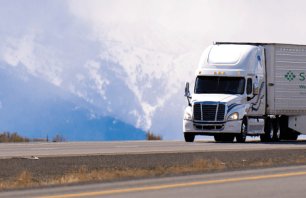A safe and efficient healthcare workplace can help lay the foundation for employee satisfaction and productivity. The Occupational Safety and Health Administration (OSHA) develops regulations to help organizations prevent injuries and protect the safety of their staff. OSHA’s Bloodborne Pathogens (BBPs) Standard was created to protect employees from exposure to BBPs like Hepatitis B (HBV) and the Human Immunodeficiency Virus (HIV).
In compliance with OSHA’s BBPs Standard, any organization with employees facing occupational exposure to human blood and other potentially infectious materials (OPIM) is required to create and follow a written Exposure Control Plan (ECP). Training employees on the ECP and workplace safety controls is required by the standard and an effective means of protecting staff from potential exposure incidents.
What Is an Exposure Control Plan for Bloodborne Pathogens?
An ECP is a written document that details how an organization will identify and mitigate risks of exposure to BBPs, along with how the workplace will respond in the event of an exposure incident. This plan will vary for each organization to align with the specific types of roles, tasks, safety controls, and potential exposures.
OSHA inspectors may evaluate ECPs during onsite visits, so organizations should ensure that their plans are accessible and current. Stericycle has an ECP template available to customers as part of its Steri-Safe® Compliance Solutions offering. It includes a Safety Plan Builder that guides users through a step-by-step process to create a detailed, customizable plan to fit the organization.
Key Components of an Effective Exposure Control Plan:
Some of the main topics an ECP must cover, include:
- Clear Exposure Determination
When creating an ECP, it’s crucial to precisely identify and document job roles where employees have potential exposure to BBPs. Specific tasks and procedures must be listed for job roles that have potential exposure to ensure everyone understands the associated risks with their work. - Thorough Hazard Assessment and Methods of Compliance
A thorough hazard assessment helps select the right Personal Protective Equipment (PPE) and implement effective safety controls. By evaluating all aspects of the workplace environment, organizations can accurately identify potential hazards. Consider engineering controls, work practices, and administrative measures, and document the methods of compliance. - Training and Communication of Hazards
Educating the workforce is essential for BBP exposure prevention. Regular training sessions should cover critical aspects like modes of transmission for BBPs and protective measures outlined in the ECP. In addition, include how hazards will be communicated through biohazard labeling methods. - Hepatitis B Vaccination Protocol
- Criteria for Vaccination: The HBV vaccination must be offered to all employees with occupational exposure within 10 working days of job assignment. List the name of the licensed healthcare provider who will provide the vaccine and answer questions as well as educate employees on the safety and benefits of being vaccinated.
- Procedure for Declination: Explain how employees can decline the vaccination if they choose to, but a declination form must be signed and put in their confidential medical records.
- BBP Exposure Incident Response Protocol
In the event of an exposure incident, employees need to act promptly, and the protocol must be listed in the ECP so everyone knows what to do. Initial actions can include:- Immediate Response: Provide first aid and wash the affected area with soap and water or flush the affected mucous membranes.
- Reporting: Employees should know how to report incidents to their supervisor or designated personnel.
- Medical Attention: Assess the risk and severity of exposure and send the injured employee to a pre-determined licensed healthcare professional for evaluation and treatment.
- Regular Review and Updates
An ECP is not static—it evolves with the workplace.- Annual Reviews: Regularly assess the ECP to ensure it remains relevant and update as necessary.
- Reflecting Changes: Update the plan to account for any modifications in tasks, procedures, or regulations. Document annual evaluation and implementation of safer medical devices designed to eliminate or minimize occupational exposure.
- Accessibility: Make sure all employees know where to find the ECP or how to request access.
- Incorporating Worker Input
Workers’ insights matter. Encourage non-managerial front line employee input on the selection of effective engineering and work practice controls. Document the solicitation in the ECP. Their feedback enhances safety protocols and ensures practicality. - Recordkeeping
Include procedures and other aspects of recordkeeping required by the BBP standard such as medical and exposure records, training records, retention requirements, which can be quite long, location of records, how employees can access, and the person responsible for maintaining.
What are the Annual Bloodborne Pathogens Training Requirements?
Organizations must provide training to any employee who has anticipated exposure to human blood or OPIM as part of their job duties. Examples include nurses, nursing assistants, physicians, environmental services staff, and other clinical and operational employees. The annual training should cover the following topics:
- The epidemiology and symptoms of bloodborne diseases
- How BBPs may be transmitted
- The steps workers can take to protect themselves from exposure
- An overview of the site’s ECP
- Information on the HBV vaccine
- Procedures and steps to take in the event of a BBP exposure incident
Benefits of Stericycle’s OSHA Compliance Program:
- The Safety Plan Builder tool ensures a user-friendly approach to creating a unique ECP.
- Demonstrates a commitment to keeping employees safe and protecting the organization from legal risks and fines, irrespective of the industry.
- Minimizes disruptions caused by workplace incidents, ensuring the smooth operation of the organization.
- Instills a culture of safety and empowerment among employees, enhancing morale, trust, productivity, and retention.
BBP training should be provided to employees with occupational exposure to human blood and OPIM at the time of initial job assignment and at least annually after. Stericycle’s online training modules can help staff understand the BBP standard and can help organizations meet the standard’s training requirements. Stericycle’s Steri-Safe® OSHA Compliance Training can help organizations remain compliant and promote workplace safety through employee education.



